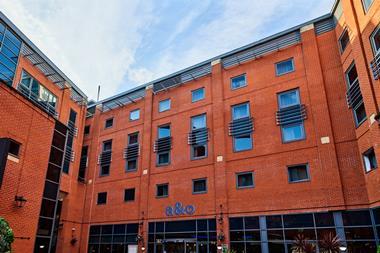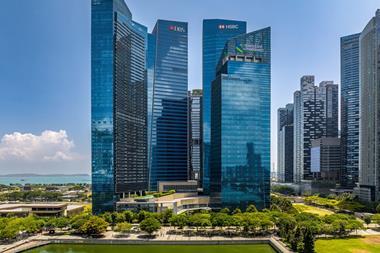The manager of Norway’s NOK10.9trn (€1trn) sovereign wealth fund made a 5% loss on its property investments last year but says it is still on the lookout for promising unlisted real estate investments despite a lull in acquisitions in 2020.
Releasing key figures from the annual results for the Government Pension Fund Global (GPFG), Norges Bank Investment Management (NBIM) – which manages the fund – revealed that unlisted real estate investments ended 2020 with a 0.1% loss.
Listed real estate, however, which is counted within the GPFG’s equities allocation, made a 14.9% loss for the year, contributing to a 5% loss overall for real estate.
Unlisted real estate investments amounted to NOK273bn at the end of 2020, but no figure was given for listed property assets. At the end of June, listed real estate assets totalled NOK136.3bn, according to NBIM’s interim report published last autumn.
The GPFG as a whole made a 10.9% return for 2020, with technology stocks leading gains, NBIM reported.
Chief real assets officer Mie Holstad, who took the lead for the asset class a few months ago when incoming CEO Nicolai Tangen reshuffled NBIM’s management team, said the pandemic had affected the sovereign wealth fund’s property holdings negatively.
“It was restrictions, it was lockdowns, it was an economic recession,” she said in the results presentation. “It was all of this [that] contributed to our negative returns last year. What we do see though, are major differences between the different sub-sectors.”
Asked in a video interview by Tangen to explain the differences between performance of the listed and the unlisted real estate portfolios, Holstad said: “This also points to what we talked about internally – that listed and unlisted may behave a bit differently in the short to medium term – whilst in the longer term they may have quite similar investment characteristics.”
She said the main contributor to strong performance for unlisted real estate had been the logistics sector.
“We do have about a quarter of our holdings in logistics on the unlisted side, while on the listed side it was the residential sector that was the one positive contribution during the pandemic,” she said. “Also the fact that our listed positions have more debt make them more volatile.”
Asked by Tangen to comment on the “relatively limited additional investments” in real estate that the fund had made in 2020, Holstad said: “The liquidity in the market has been quite low, significantly lower than in previous years”, adding that NBIM’s real estate investment strategy remained the same.
“We have bought listed real estate for about US$3bn dollars during the pandemic, and that is our strategy too – to exploit those market disruptions. And our investment team are still out there looking for good opportunities, and if the right one comes along we are definitely there,” she said.
Holstad said there had been no big differences in how real estate investments performed in different geographies in 2020.
“You can see that our office and retail assets performed slightly better in continental Europe rather than US and Asia and UK,” she said. “But, again, I would point to these sub-sector differences – there is more variation there.”
Regarding the long-term outlook for real estate, she said that, within retail, the trend for people to shop online than in stores would likely continue.
“On the logistics side the growth in e-commerce – which is the flip side of the retail trend – is continuing,” she said. “But on the office side I think it is harder to predict, so this is something we need to continue to monitor as we do today.”
To read the digital edition of the latest IPE Real Assets magazine click here.












